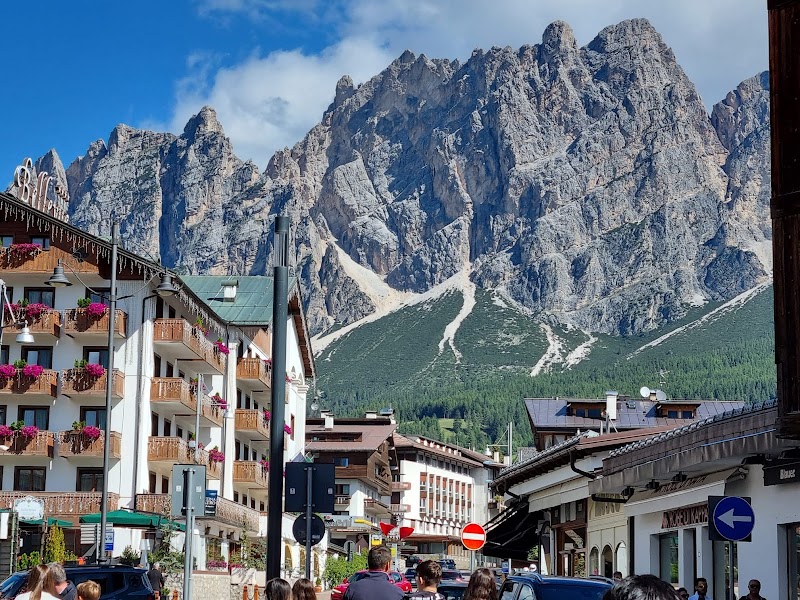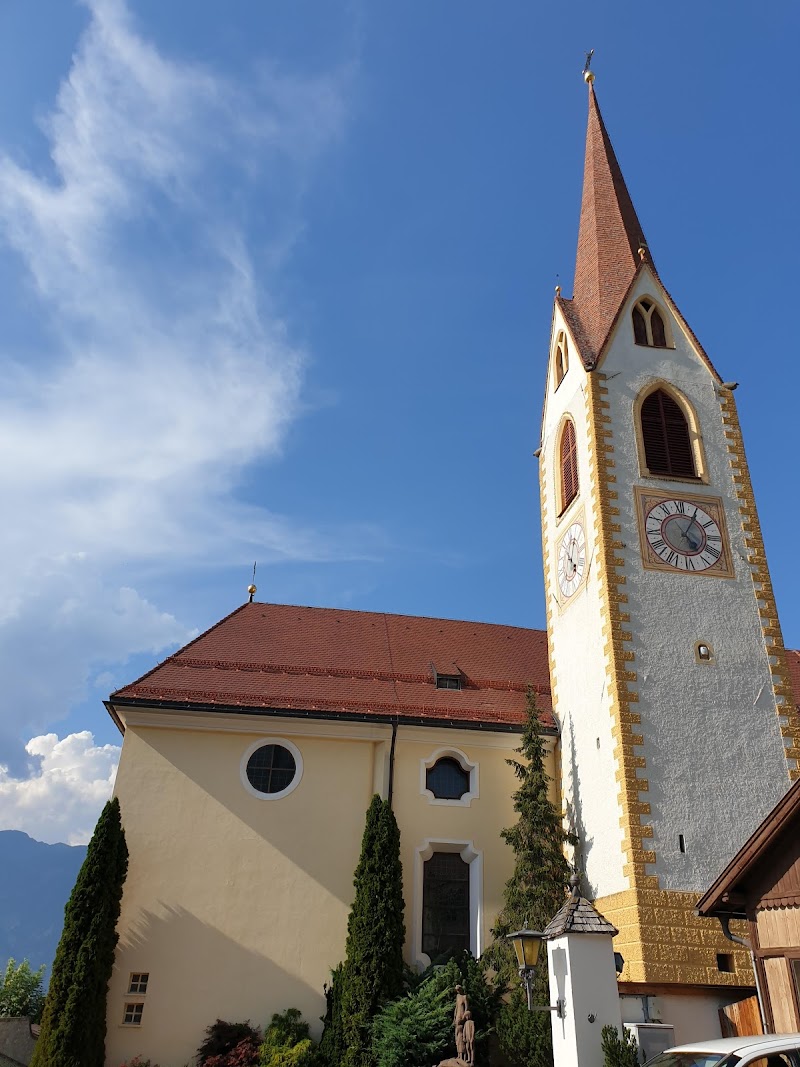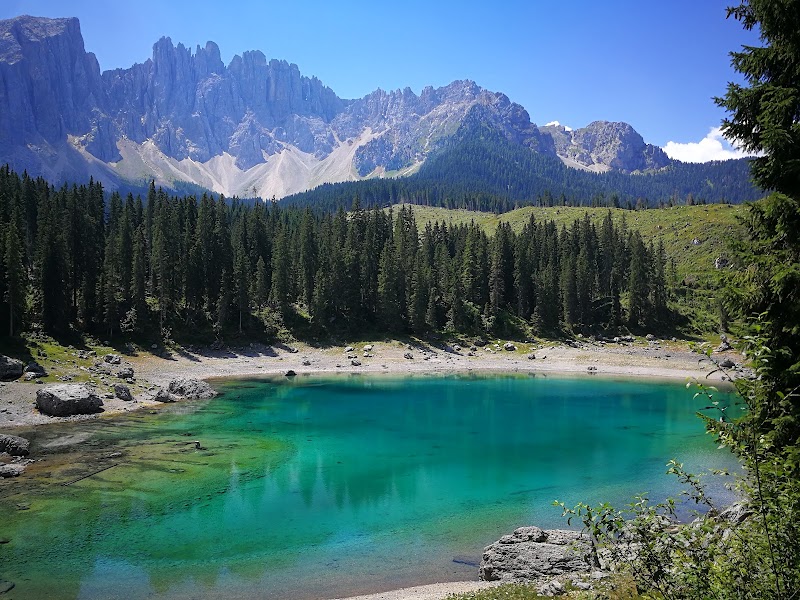Welcome to the Dolomites: Italy's Alpine Masterpiece
Did you know the Dolomites, a part of the Southern Limestone Alps, spread across an impressive 350,000 acres? These mountains are famous for their striking peaks, lush valleys, and captivating lakes. This UNESCO World Heritage site is a melting pot of natural beauty, thrilling adventures, and rich local culture. Be it climbing the Tre Cime di Lavaredo for an adrenaline rush or leisurely strolling around the tranquil Lake Braies, the Dolomites offer an experience of a lifetime.
But where does one start such a grand adventure? That's where the tourist map of the Dolomites comes in, acting as your ultimate guide to navigate this Alpine wonderland. This map is more than just a piece of paper with lines and symbols; it's a tool of discovery that will unveil the Dolomites' breathtaking landscapes and hidden secrets. Let the map lead your journey and unlock experiences you never imagined.
" Booking.comUnveiling the Hidden Gems of the Dolomites
While the Dolomites are famous for their UNESCO World Heritage status and iconic sites like Tre Cime di Lavaredo and Lake Braies, there's more to unearth. The Dolomites are home to a plethora of attractions that often stay off the usual tourists' radar.
1. The Serenity of Lago di Sorapis
For a less traveled experience, the turquoise waters of Lago di Sorapis is the place to be. Nestled in the heart of the Dolomites, this lake offers a tranquil escape from the crowded tourist spots. Its strikingly blue waters are a result of the surrounding limestone, making it a surreal sight to behold. Interestingly, the trek to Lago di Sorapis starts from the popular destination of Cortina d'Ampezzo, enabling you to discover both famous and hidden gems in one expedition.
2. The Charming Village of Funes
Experience the authentic Dolomite lifestyle in Funes, a picturesque village surrounded by towering peaks. The village's iconic St. Magdalena Church with the Odle mountain range in the backdrop is a sight to behold. Funes also serves as an excellent base for exploring the Puez-Geisler Nature Park, a less crowded but equally captivating alternative to the often-visited Tre Cime di Lavaredo.
3. The Splendor of Castel Tirolo
Standing tall above the city of Merano, Castel Tirolo is a medieval marvel that offers stunning panoramic views of the Dolomites and beyond. This ancient castle, which was once the seat of Tyrolean princes, now houses the South Tyrol Museum of Culture and Provincial History, making it a must-visit for history enthusiasts and nature lovers. It's just an hour's scenic drive from the bustling city of Piedmont, encapsulating a delightful mix of urban and rural experiences in the Dolomites.
4. The Enigmatic Earth Pyramids of Ritten
For a fascinating geological spectacle, visit the Earth Pyramids of Ritten. These are Europe's tallest and most flawlessly formed earth pyramids, sculpted by nature over millennia. You can spot them near the town of Bolzano, home to the South Tyrol Museum of Archaeology, housing the renowned Iceman mummy, Ötzi.
5. The Peaceful Sanctuary of Monte di Mezzo
Escape the touristy chaos and immerse yourself in the serene wilderness of Monte di Mezzo, a relatively untouched mountain range in the Dolomites. A paradise for hikers, this area flaunts pristine forests, crystal-clear lakes, and panoramic views that rival the more famous mountain ranges. While you're in the vicinity, take the opportunity to visit the nearby city of Trento, a jewel of Renaissance architecture.
These hidden treasures of the Dolomites, along with the renowned attractions, weave a rich tapestry of experiences awaiting exploration. To assist with your itinerary, consider using a tourist map of Italy, which gives a comprehensive guide to the nation's most enchanting destinations, including the Dolomites.
Immerse Yourself in the Dolomites' Rich History and Culture
Besides nature's wonders, the Dolomites are drenched in a deep fusion of history and culture. From age-old traditions to intriguing archaeological discoveries, there's a myriad of cultural experiences that offer a deeper understanding of this unique region.
1. Ladino Culture in Val Gardena
Dive into the ancient Ladino culture in Val Gardena. As one of the three Ladin-speaking valleys in the Dolomites, Val Gardena offers an intriguing glimpse into the region's linguistic heritage. Here, you can visit the Museum Gherdëina to learn about the valley's history and traditions.
2. Architectural Wonders of Belluno
Witness the architectural marvels of Belluno, an enchanting city at the southern edge of the Dolomites. The city's historic center is filled with Venetian-style palaces and churches, offering a stark contrast to the rugged mountain landscapes. Don't forget to visit the Belluno Cathedral and the Palazzo dei Rettori, two of the city's architectural gems.
3. The Historical Significance of Forte Tre Sassi
Step back in time at Forte Tre Sassi, a fortress constructed during World War I. This fort serves as a poignant reminder of the region's past and offers a detailed insight into the life of soldiers stationed in the Dolomites. It's located near the renowned Passo Falzarego, making it an easily accessible historical site during your Dolomite adventure.
By delving into both the natural and cultural treasures of the Dolomites, you're sure to curate a travel experience that's just as memorable as it is enriching. Remember, the Dolomites are more than a series of scenic landscapes - they're a vibrant tapestry of experiences waiting to be discovered.

Practical Information for Visiting the Dolomites
Whether you're a seasoned traveler or a first-time adventurer, navigating the Dolomites can be a breeze with the right information. Having specifics about transportation, schedules and prices, safety protocols, and the best times to visit can significantly enhance your trip.
Transportation and Mobility
Getting to the Dolomites is an adventure in itself. Your options include trains, buses, and rental cars, each providing unique views of the region's captivating landscapes. Trains connect major Italian cities to the provinces of Trento, Belluno, and Bolzano, the gateways to the Dolomites. Upon arrival, you can catch local buses to reach smaller towns and hiking trails. Rental cars offer the most flexibility but be sure to check road conditions in winter.
Schedules and Prices
When planning your Dolomites adventure, note that the region operates on seasonal schedules. Most cable cars, funiculars, and chair lifts operate from June to September and December to April, with adult tickets usually costing between €10 and €30. Museums and historical sites have varying schedules, but many are open from Tuesday to Sunday, 10am to 6pm, with entry fees around €8.
Safety Tips
Your safety is a top priority. Always check weather forecasts before any mountain excursions and carry essential safety gear, including a map, compass, and first aid kit. It's advisable to inform someone of your hiking plans and estimated return time. In winter, be aware of avalanche risks and consider hiring a mountain guide for off-piste skiing.
Practical Recommendations
The Dolomites are a year-round destination, with each season offering a unique spectacle. June to September is ideal for hiking and mountain biking, while December to March is perfect for winter sports. And don't forget to carry your camera – the Dolomites host some of the world's most breathtaking sunrise and sunset views!
Best Times to Visit
The Dolomites offer a unique experience in every season. For skiing and winter sports enthusiasts, the period from December to March is perfect. If you prefer hiking, mountain biking, or simply soaking in the stunning landscapes, the months from June to September are best. Regardless of when you visit, remember that mountain weather can be unpredictable, so pack accordingly.

Frequently Asked Questions
What are some unique culinary experiences in the Dolomites?
The Dolomites offer a unique blend of Italian, Austrian, and Ladin influences in its cuisine. Savor a hearty "Canederli" (bread and speck dumplings) in a mountain hut or indulge in the traditional Ladin dish "Turtres" (spinach and cheese-filled pastries) in Val Gardena. Don't miss the opportunity to pair your meals with an excellent selection of local wines, such as the crisp and aromatic Gewürztraminer.
Are there any specific rules for hiking in the Dolomites?
Yes, there are some important rules to adhere to when hiking in the Dolomites to ensure both your safety and the preservation of the environment. Always stay on marked trails and avoid trampling on the vegetation. Feeding wildlife is strictly forbidden, as it disrupts their natural diet. Respect the silence of nature and avoid making unnecessary noise. Lastly, remember to carry out all your trash with you.
What are the options for overnight stays in the mountains?
Staying overnight in the mountains is a unique experience you shouldn't miss. The Dolomites offer a wide range of mountain huts ("Rifugi") where you can rest, eat, and sleep. They range from simple dormitory accommodations to more luxurious lodges with private rooms. Remember to book in advance, especially during the high season.
Are there any local festivals or events in the Dolomites?
The Dolomites are alive with numerous festivals and events throughout the year, offering a great opportunity to immerse yourself in the local culture. The "Speckfest" in Val di Funes celebrates the delicious smoked ham of the region, while the "Maratona dles Dolomites" attracts cyclists from across the globe. In winter, the "Fiaccolata delle Dolomiti" is a magical torchlight procession on skis.
What are the most unique flora and fauna in the Dolomites?
The Dolomites are home to a diverse range of flora and fauna. Unique species such as the Edelweiss flower and animals like the marmot, chamois, and golden eagle can be spotted in their natural habitat. Please remember to observe them from a distance and do not disturb them.
What are some lesser-known attractions in the Dolomites?
While the Dolomites have many popular attractions, there are also lesser-known spots that offer tranquility and natural beauty. The "Mondeval Man" archaeological site near Selva di Cadore provides a glimpse into the region's ancient history. The picturesque Vallunga valley, a UNESCO World Heritage site, is a haven for nature lovers. The Fanes-Sennes-Prags Nature Park, with its turquoise lakes and stunning alpine meadows, is another hidden gem.


